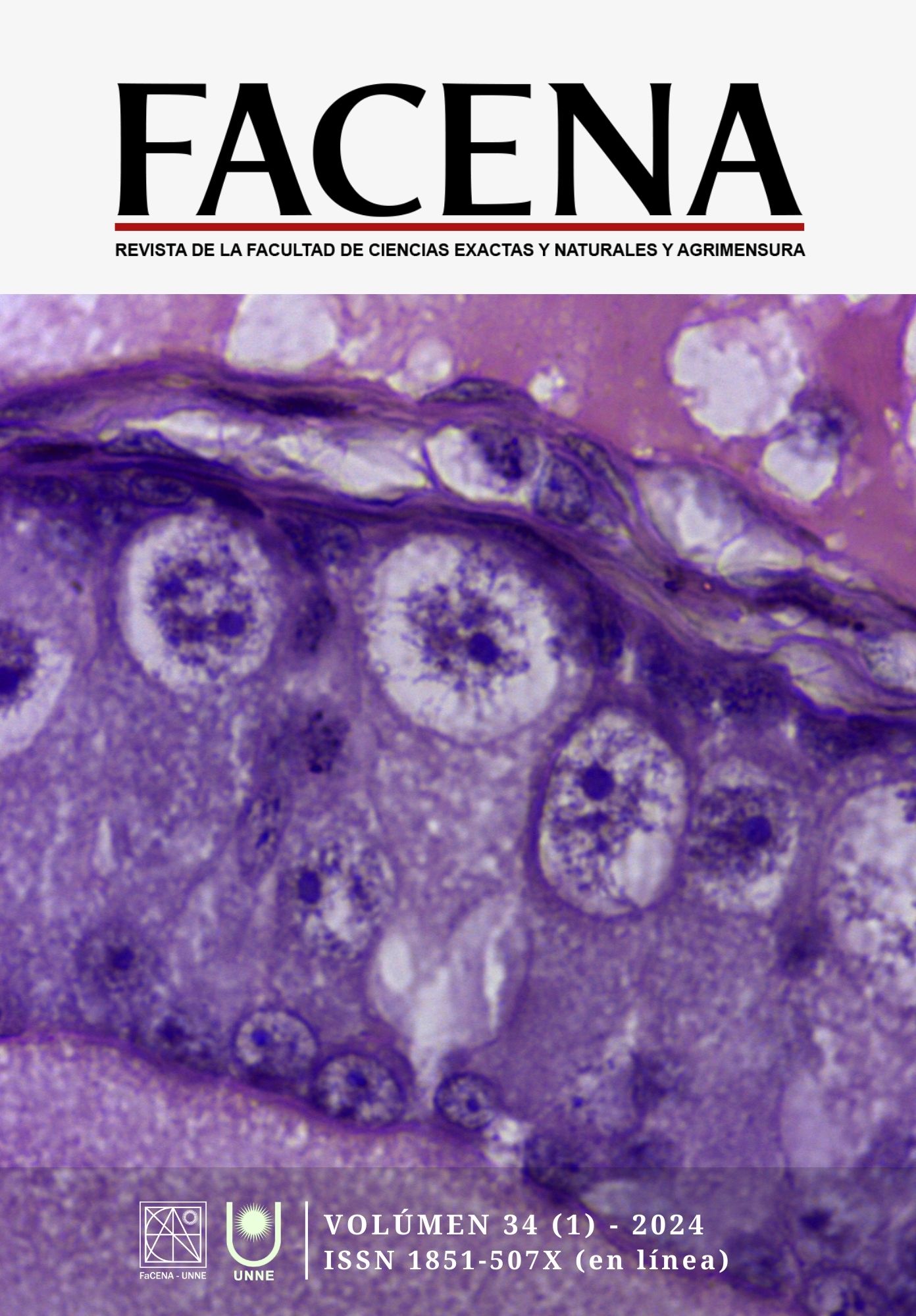Harnessing of algae in the patagonian territory: assessment of its environmental impact
DOI:
https://doi.org/10.30972/fac.3417407Keywords:
Sodium alginate, Biorefinery, Dimethyl isosorbide, LCA, Patagonian macroalgaeAbstract
The use of macroscopic seaweed biomass within the concept of a biorefinery is presented as one of the most promising alternatives for obtaining a wide range of compounds by harnessing biomass. However, currently, the study of macroalgal biorefineries is less developed than their terrestrial biomass-based counterparts. In this regard, the validation of this concept is crucial, considering not only technical feasibility but also including issues related to the environmental dimension of sustainability. Therefore, this work proposes the environmental impact assessment using a life cycle assessment (LCA) of an integrated biorefinery based on macroalgae, employing an open-access computational tool, OpenLCA. The production of 600 t/yr of dimethyl isosorbide (DMI) is considered and compared to the possibility of alternatively producing 322 t/a of DMI and 244 t/a of alginate, equivalent to the use of 1864 t/yr of Patagonian macroalgae. Producing sodium alginate jointly with DMI significatively reduces the environmental impact among all categories. For instance, if it is considered “climate change”, the impact within this category is reduced 25,8 % when both compounds are produced.
Downloads
References
Arias, A; Feijoo, G; Moreira, M.T. 2023. Macroalgae biorefineries as a sustainable resource in the extraction of value-added compounds. Algal Research, 69, 102954.
Casoni, A.I; Pedrozo, H.A; Ramos, F.D; Estrada, V; Diaz, M.S. 2022. Macroalgae-based integrated biorefinery for hydrocolloids, chemicals and advanced biofuels production. Computer Aided Chemical Engineering, 51, 715-720.
Casoni, A.I; Ramos, F.D; Estrada, V; Diaz, M.S. 2020. Sustainable and Economic analysis of Marine Macroalgae Based Chemical Production – Process Design and Optimization. Journal of Cleaner Production, 276, 122792.
Dümenci, N.A.; Temel, F.A.; Turan, N.G. 2023. Role of different natural materials in reducing nitrogen loss during industrial sludge composting: Modelling and optimization. Bioresource Technology, 385, 129464.
Golsteijn, L; Vieira, M. 2020. Applicability of the European Environmental Footprint (EF) methodology in Southern Mediterranean countries—learnings and recommendations for enabling EF-compliant studies in regions outside of Europe. International Journal of Life Cycle Assessment, 25, 2407-2416.
González-Castaño, F.A; Bandoni, A; Díaz, M.S. 2018. Towards Economically and Environmentally Optimal Operations in Natural Gas Based Petrochemical Sites. Industrial & Engineering Chemistry Research, 57, 5999-6012.
González Castaño, F.A. 2019. Análisis de ciclo de vida y optimización matemática como herramientas para la producción sustentable de energía y productos químicos. Tesis doctoral, Universidad Nacional del Sur.
González-Gloria, K.D; Rodríguez-Jasso, R.M; Aparicio, S.E; Chávez González, M.L; Kostas, E.T; Ruiz, H.A. 2021. Macroalgal biomass in terms of third-generation biorefinery concept: Current status and techno-economic analysis – A review. Bioresource Technology Reports, 16, 100863.
Kostas, E.T; Adams, J.M.M; Ruiz, H.A; Durán-Jimenéz, G; Lye, G.J. 2021. Macroalgal biorefinery concepts for the circular bioeconomy: A review on biotechnological developments and future perspectives. Renewable & Sustainable Energy Reviews, 151, 111553.
Pedrozo, H.A; Rodriguez Reartes, S.B; Vecchietti, A.R; Diaz, M.S; Grossmann, I.E. 2021. Optimal design of ethylene and propylene coproduction plants with generalized disjunctive programming and state equipment network models. Computers & Chemical Engineering, 149, 107295.
Sudhakar, M.P; Kumar, B.R; Mathimani, T; Arunkumar, K. 2019. A review on bioenergy and bioactive compounds from microalgae and macroalgae-sustainable energy perspective. Journal of Cleaner Production, 228, 1320-1333.
www.agribalyse.fr (Último acceso 19.10.2023)
Zapata-Boada, S; Gonzalez-Miquel, M; Jobson, M; Cuellar-Franca, R. 2021. Integrating process simulation and life cycle assessment to evaluate the economic and environmental performance of algae biodiesel. Computer Aided Chemical Engineering, 50, 1903-1908.
Zore, Ž; Čuček, L; Kravanja, Z. 2017. Syntheses of sustainable supply networks with a new composite criterion – Sustainability profit. Computers & Chemical Engineering, 102, 139-155.
Zore, Ž; Čuček, L; Sirovnik, D; Pintarič, Z. N; Kravanja, Z. 2018. Maximizing the sustainability net present value of renewable energy supply networks. Chemical Engineering Research & Design, 131, 245-265.








